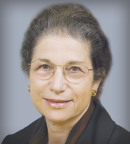In a patient-reported outcomes analysis from the phase III OlympiA trial reported in the Journal of Clinical Oncology, Patricia A. Ganz, MD, FASCO, and colleagues found no clinically important differences in fatigue—the outcome of primary interest—between adjuvant olaparib and placebo in patients with germline BRCA1/2-mutant, high-risk HER2-negative early breast cancer who had received neoadjuvant or adjuvant chemotherapy.
The trial supported the March 2022 approval of olaparib in this setting.

Patricia A. Ganz, MD, FASCO
Study Details
In the trial, patients were randomly assigned to receive 1 year of treatment with olaparib or placebo after neoadjuvant or adjuvant chemotherapy. The current analysis included 1,538 patients: 746 received neoadjuvant chemotherapy (including 385 in the olaparib group and 365 in the placebo group) and 792 received adjuvant chemotherapy (including 385 in the olaparib group and 407 in the placebo group). The primary outcome measure was fatigue, measured with the Functional Assessment of Chronic Illness Therapy-Fatigue scale.
Key Findings
Fatigue was significantly worse with olaparib vs placebo, but differences did not reach the prespecified criterion of ≥ 3 points for clinically meaningful difference. Differences between the olaparib group vs the placebo group were –1.3 points (95% confidence interval [CI] = –2.4 to –0.2, P = .022) among those receiving neoadjuvant chemotherapy and –1.3 (95% CI = –2.3 to –0.2, P = .017) among those receiving adjuvant chemotherapy at 6 months. At 12 months, differences were –1.6 (95% CI = –2.8 to –0.3, P = .017) among those receiving neoadjuvant chemotherapy and –1.3 (95% CI = –2.4 to –0.2, P = .025) among those receiving adjuvant chemotherapy. No statistically significant differences were observed between treatment groups at 18 and 24 months.
As measured by the EORTC Quality of Life Questionnaire-30, nausea/vomiting severity was worse with olaparib vs placebo at 6 months (difference = 6.0 points, 95% CI = 4.1–8.0 in those receiving neoadjuvant chemotherapy, and difference = 5.3 points, 95% CI = 3.4–7.2 in those receiving adjuvant chemotherapy) and at 12 months (difference = 6.4 points, 95% CI = 4.4–8.3 among those receiving neoadjuvant chemotherapy and difference = 4.5 points, 95% CI = 2.8–6.1 among those receiving adjuvant chemotherapy). No difference in severity of diarrhea symptoms between groups was observed over time; some clinically meaningful differences were observed between groups for other symptoms, but no such differences were observed for function subscales or global health status.
The investigators concluded, “Treatment-emergent symptoms from olaparib were limited, generally resolving after treatment ended. Olaparib- and placebo-treated patients had similar functional scores, slowly improving during the 24 months after neoadjuvant or adjuvant chemotherapy and there was no clinically meaningful persistence of fatigue severity in olaparib-treated patients.”
Dr. Ganz, of the UCLA Health Jonsson Comprehensive Cancer Center, University of California, Los Angeles, is the corresponding author for the Journal of Clinical Oncology article.
Disclosure: The study was supported by the National Cancer Institute and AstraZeneca as part of an alliance with Merck and Co, Inc. For full disclosures of the study authors, visit ascopubs.org.

